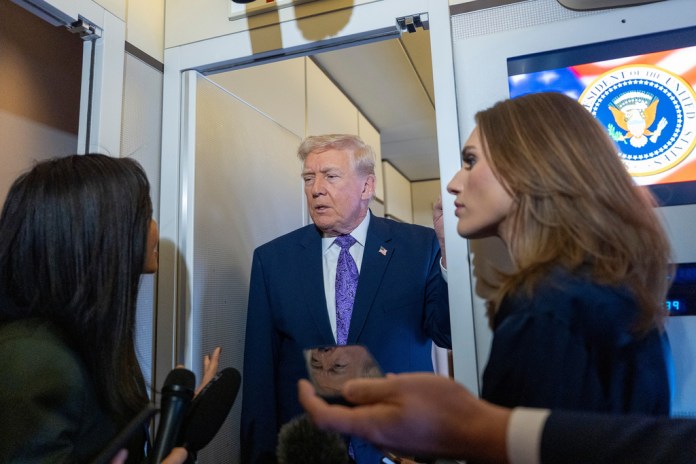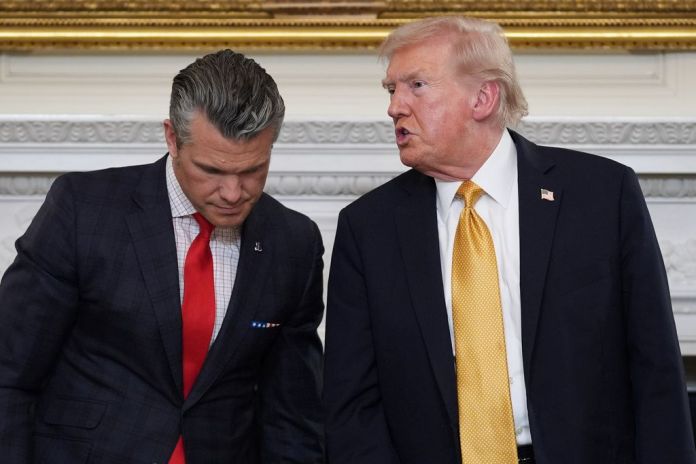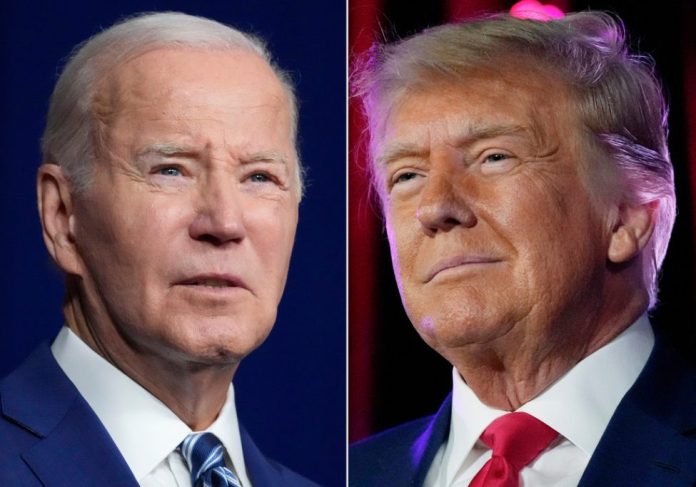Trump Should Start Raiding Antifa Terror Cells
The article discusses President Donald Trump’s designation of Antifa as a domestic terrorist organization following the assassination of Charlie Kirk by a leftist extremist. Trump ordered federal agencies to use all available means to investigate and dismantle Antifa operations.Despite some decisive law enforcement actions against Antifa protests, the author argues that Antifa remains a well-organized and coordinated threat, contrary to media portrayals of it as merely an ideology without structure.
The piece draws ancient parallels to past left-wing domestic violence threats, especially the First red Scare after World War I, when the U.S. government took strong action against communist and anarchist groups through nationwide raids known as the Palmer Raids. These effectively disrupted radical groups responsible for bombings and violence at the time.
The author suggests that contemporary officials like FBI Director Kash Patel and Attorney General Pam Bondi have far more resources than their counterparts a century ago, and they should apply similar but legally sound tactics to combat Antifa’s current domestic terrorism threat. The article calls for nationwide federal raids and increased law enforcement pressure to neutralize Antifa cells and restore order.
Soon after the assassination of Charlie Kirk at the hands of a deranged leftist, President Donald Trump took the long-overdue step of designating Antifa as a domestic terrorist organization.
As part of that order, Trump declared, “All relevant executive departments and agencies shall utilize all applicable authorities to investigate, disrupt, and dismantle any and all illegal operations — especially those involving terrorist actions — conducted by Antifa.”
In a show of defiance against the new order, Antifa thugs assaulted a federal building in Eugene, Oregon, pounding on doors and harassing employees. Law enforcement dispersed the group and detained five of the besiegers. While the initial response was decisive, it was ultimately a reaction to an Antifa offensive, not a proactive measure against the organization.
The leftist media love to pretend that Antifa is just an “idea” that has no real structure, logistics, or national leadership, but the protests, riots, and attacks over the last few years have proven without a doubt that Antifa is both highly organized and coordinated. In the wake of the violent attacks on conservatives by left-wing radicals over the last month, it’s past time for the Trump administration to take decisive action and crush the Antifa cells embedded across the country.
The United States has dealt with mass left-wing violence before, perhaps most famously in the late 1960s and early ’70s when radical groups like the Weather Underground and the Black Liberation Army unleashed a wave of terror and murder. But many of the perpetrators of that violence ended up being rewarded for their wanton destruction and disregard for human life. Weather Underground co-founders Bill Ayers and Bernardine Dohrn became distinguished professors and helped launch Barack Obama’s political career, while Assata Shakur, though she spent decades in exile in Cuba after her escape from prison, became a leftist icon in the same vein as Che Guevara.
Most people are at least somewhat familiar with the Second Red Scare, which lasted from the late 1940s to the late ’50s. They’ve learned from hysterical media talking heads and academics that McCarthyism is a dirty word, or maybe had to read a very allegorical, award-winning play about it for English class.
But the government’s response to the First Red Scare after World War I proved far more effective than blacklisting some celebrities and catching a few spies. In a series of raids over a six-month period, the Justice Department tore out the growing communist and anarchist groups in the country, root and stem.
After the Bolshevik revolution overthrew the Russian tsar and ushered in the world’s first communist state in 1917, the United States government began to worry about how much influence similar groups had gathered in America. At the same time, communist and anarchist groups, inspired by the Russian Revolution, decided to increase their agitation, creating two competing communist parties that advocated for a Bolshevik-style revolution in the U.S.
A massive wave of labor strikes that began in early 1919, including a violent riot in Cleveland on May Day, flared tensions, and then anarchists carried out a bombing campaign throughout the country on May Day (International Workers’ Day) 1919. In all, 36 packages were mailed, targeting high-ranking political and business figures like Supreme Court Justice Oliver Wendell Holmes Jr., U.S. Attorney General A. Mitchell Palmer, John D. Rockefeller Sr., and J. P. Morgan Jr. A heroic New York City postal worker intercepted 16 parcels intended for “political and business leaders, including John D. Rockefeller.”
On June 2, 1919, another coordinated bombing campaign rocked eight American cities, targeting politicians, judges, and law enforcement. Three people died in bombings that hit Boston, Cleveland, Philadelphia, Washington, D.C., and New York City. One of those bombings targeted Attorney General Palmer’s residence in Washington, D.C., damaging the building and killing the would-be bomber when the device went off too early.
In response, Palmer created the General Intelligence Division within the Justice Department to hunt down and dismantle radical groups within the country. A young J. Edgar Hoover headed the task force.
A strike among Boston police officers in September caused concern that law enforcement might aid communist insurrectionists, and a month later, the Senate passed a resolution demanding to know what the federal government planned to do “to control radical elements … and other information relative to the ‘Red’ campaign in this country.” In response, Palmer relayed to the Senate that his agents had listed “60,000 persons, practically all aliens, identified with anti-American and disloyal activities.”
On Nov. 7, 1919, federal agents conducted raids on the anarchist Union of Russian Workers in a dozen cities, including the organization’s headquarters in New York City. The agents nabbed 200 suspected anarchists in NYC alone and nearly 1,200 nationwide. A second raid on the Union’s headquarters later in November discovered a false wall that concealed a workshop for making bombs. In December, 249 radicals, including well-known anarchist activist Emma Goldman, were deported to Soviet Russia after they were identified by Hoover’s division as participating in anti-American activities.
The largest raid took place on Jan. 2, 1920, when federal agents detained between 3,000 and 10,000 people suspected of being communist sympathizers in almost three dozen cities across the country. State and local authorities, along with the feds, conducted follow-up raids the next day.
Concerns about the constitutionality of the Palmer Raids and the potential violation of the right to free speech dogged Palmer and Hoover in the aftermath of the Jan. 2 raid. The American Civil Liberties Union, created in opposition to the Palmer Raids, sponsored a scathing report that accused Palmer of a lengthy list of civil rights abuses. Palmer had intended to deport many of the suspected communists through the Immigration Act of 1918, but the acting secretary of labor reversed most of the deportation warrants. Then the First Red Scare petered out after Palmer’s warning about a communist revolution on May Day 1920 never materialized.
The Palmer Raids resulted in thousands of arrests and 556 deportations — all accomplished in only a few months. Though he did not uncover a plot to overthrow the government, Palmer achieved his immediate aims: Dangerous extremists were exposed (like the bombmakers at the Union of Russian Workers) and expelled from the country. The communist and anarchist parties in the U.S. did not ride the same wave of fervor that broke out in France and Germany in the years after the Russian Revolution, which allowed the rise of major communist parties in those countries, and they remain almost entirely irrelevant today. But the true successors of the summer 1919 bombers — Antifa — have grown in both power and militancy.
FBI Director Kash Patel and Attorney General Pam Bondi have infinitely more resources than Palmer and Hoover did during the First Red Scare, and they should use those resources to crack down on the insurrectionary anarchists and communists of Antifa. The DOJ can easily avoid the legal pitfalls of the Palmer Raids but still use them as a blueprint for how to deal with domestic terror cells in the homeland. Given the level of political violence unleashed by Antifa in the last month, Trump needs to take decisive action by ordering the DOJ and FBI to begin nationwide raids targeting the Antifa domestic terror organization and its allies.
Hayden Daniel is a staff editor at The Federalist. He previously worked as an editor at The Daily Wire and as deputy editor/opinion editor at The Daily Caller. He received his B.A. in European History from Washington and Lee University with minors in Philosophy and Classics. Follow him on Twitter at @HaydenWDaniel
" Conservative News Daily does not always share or support the views and opinions expressed here; they are just those of the writer."




